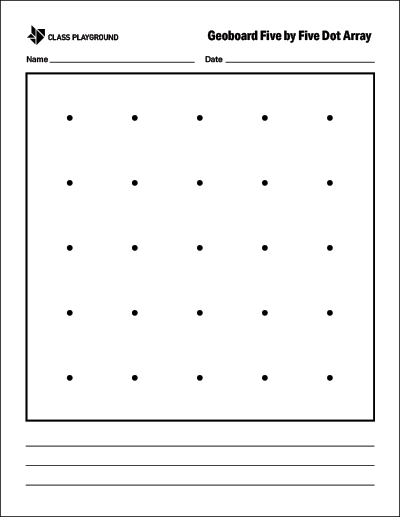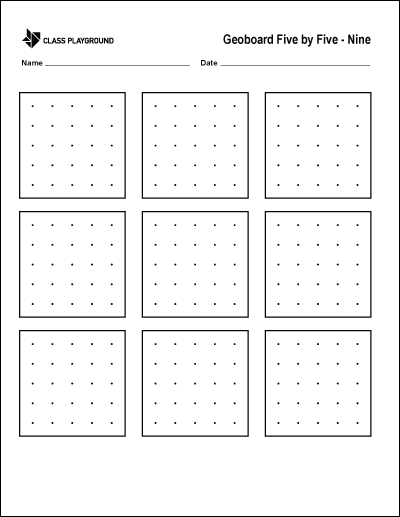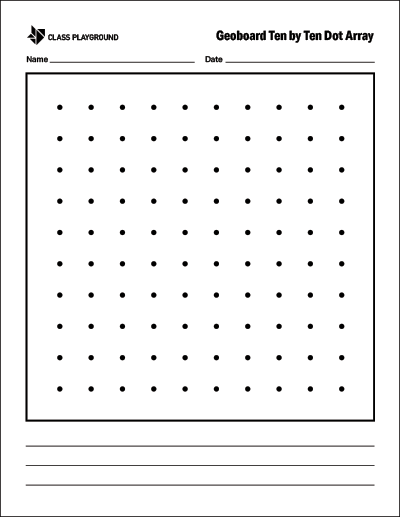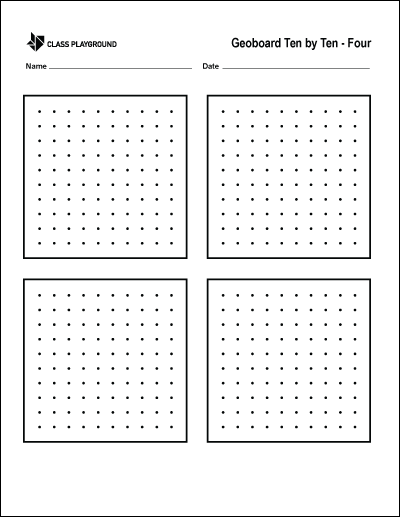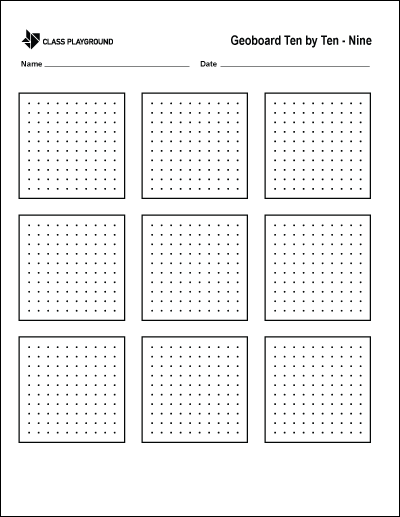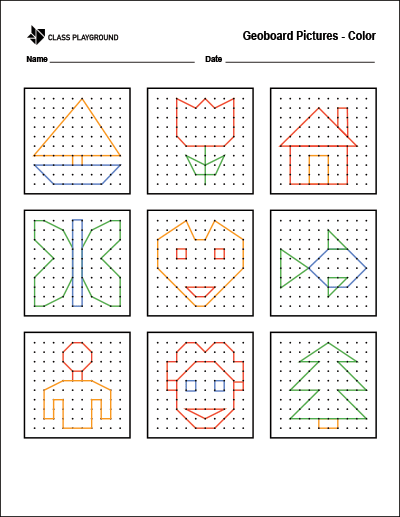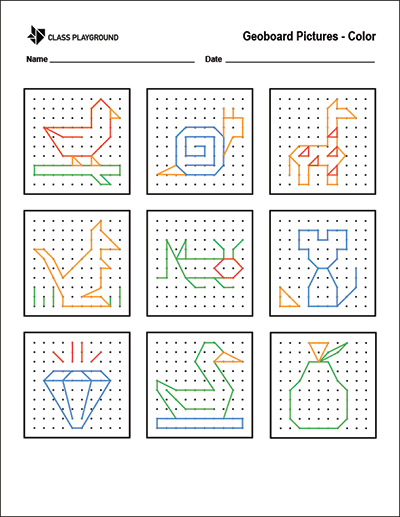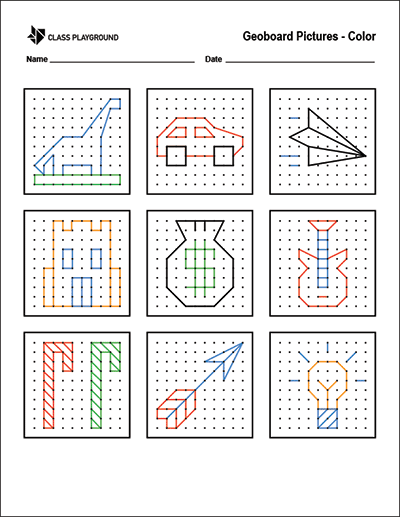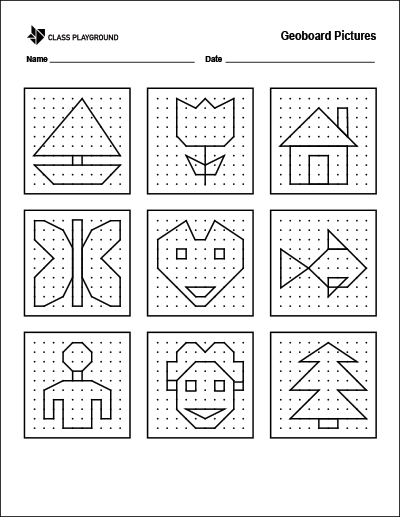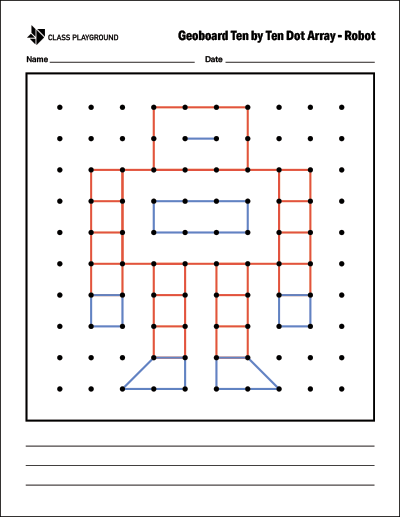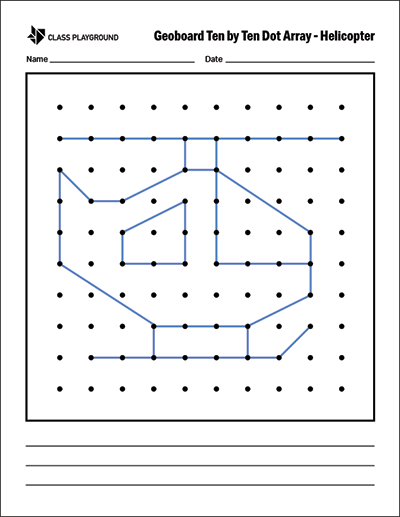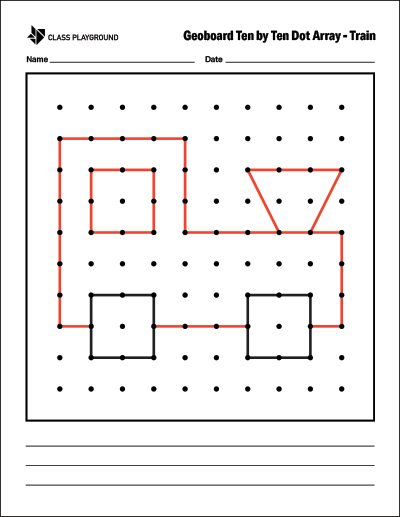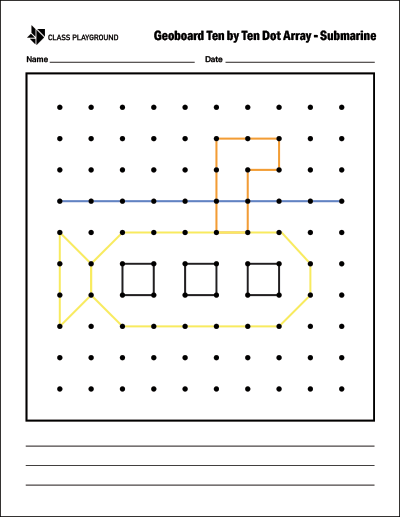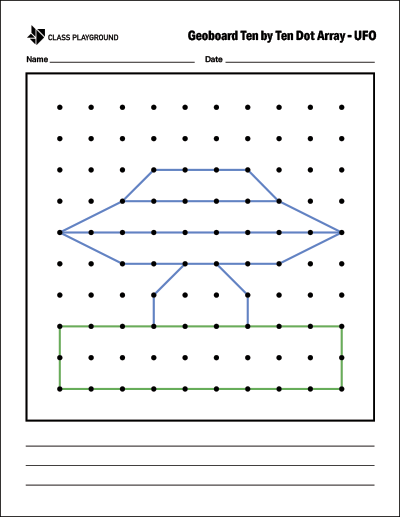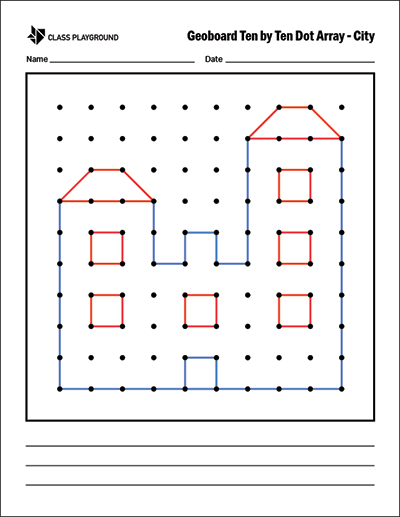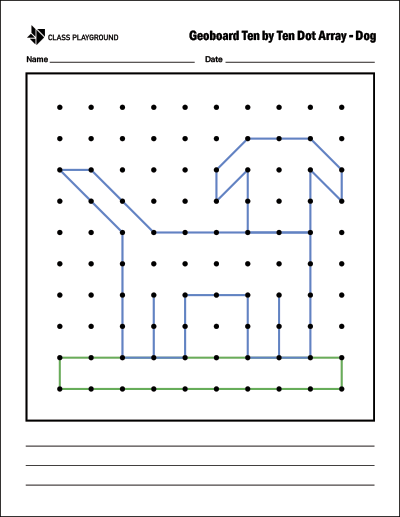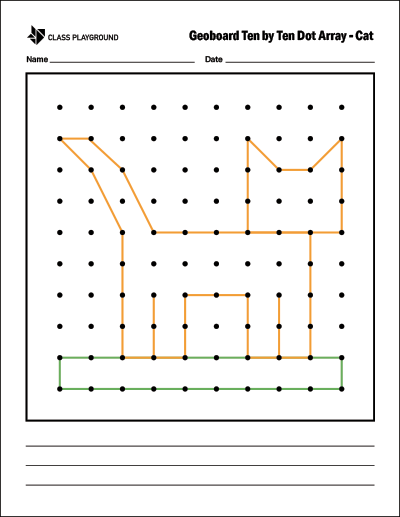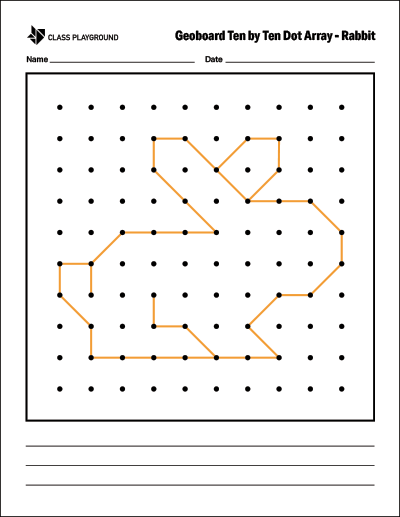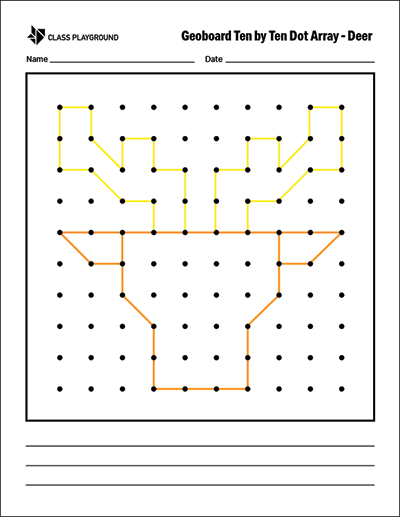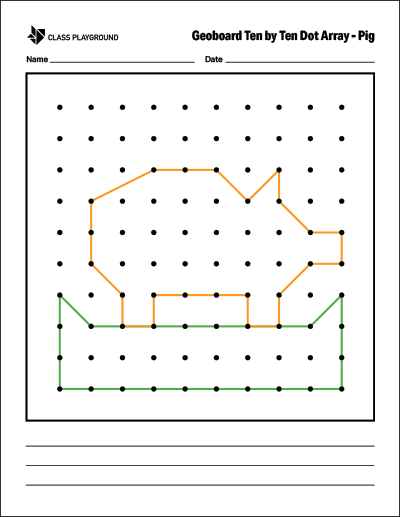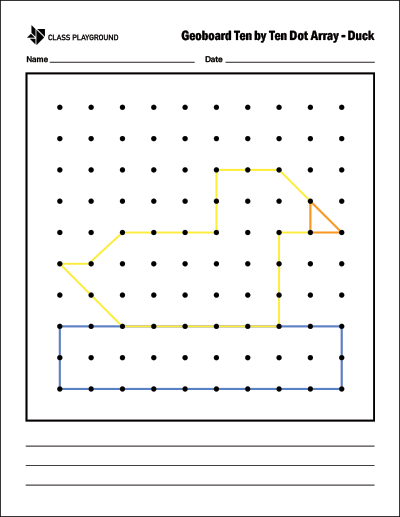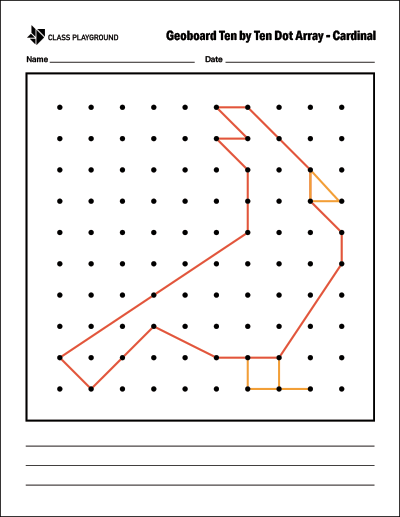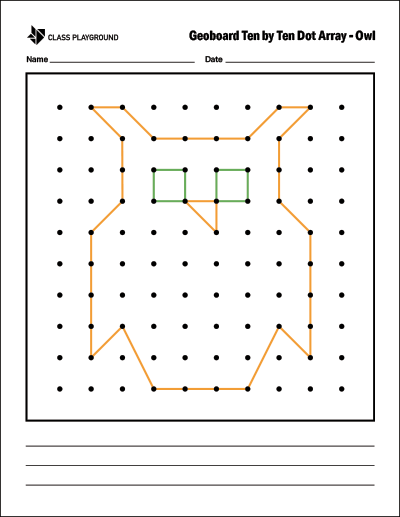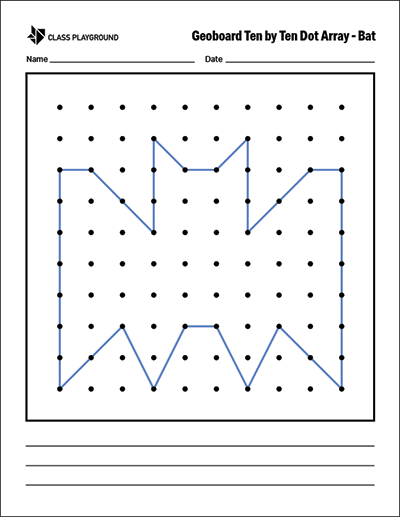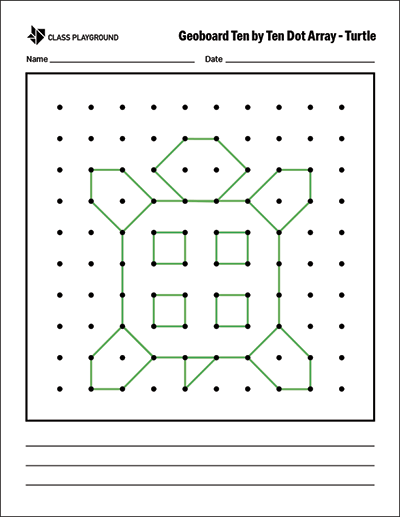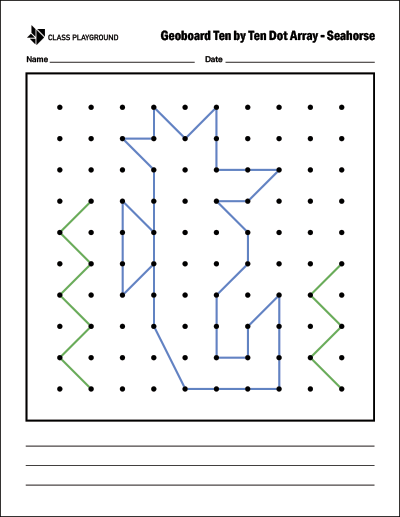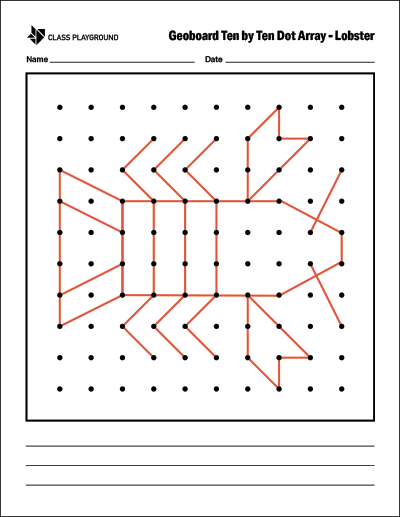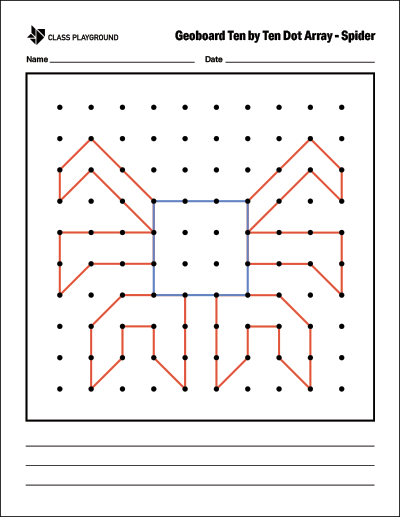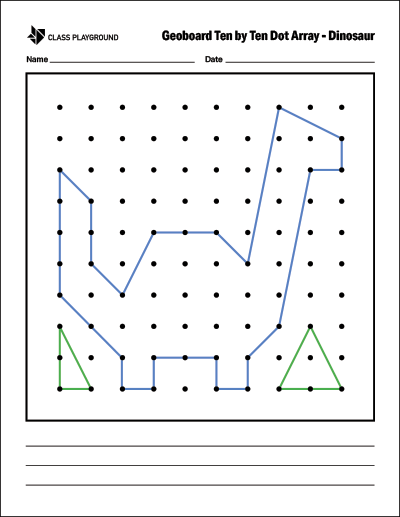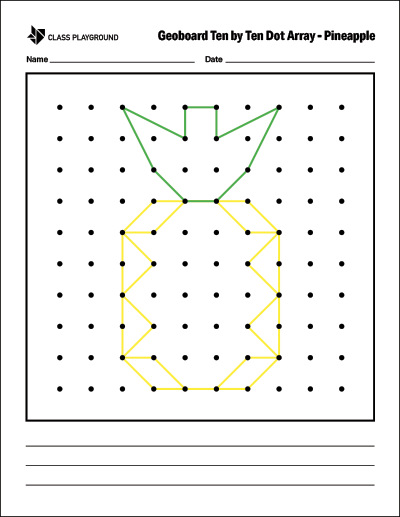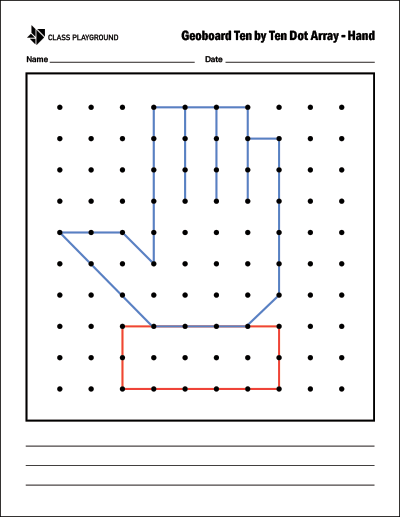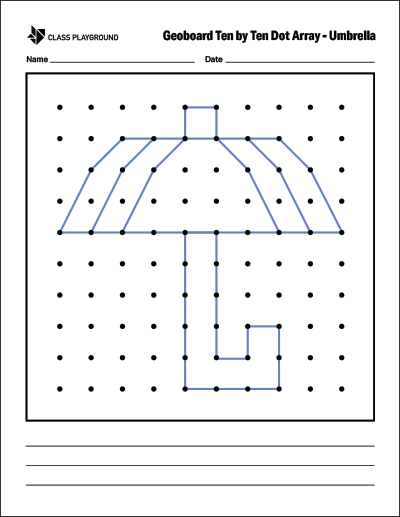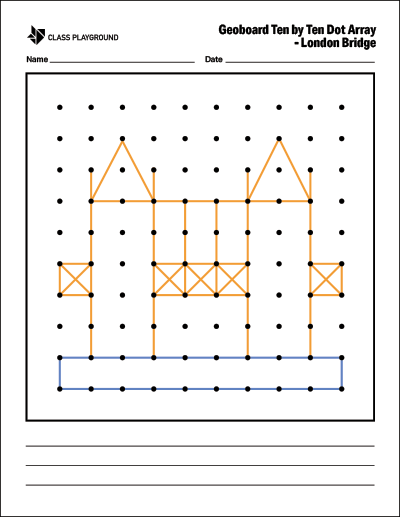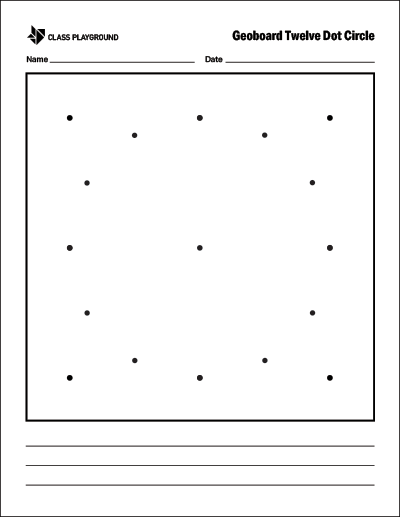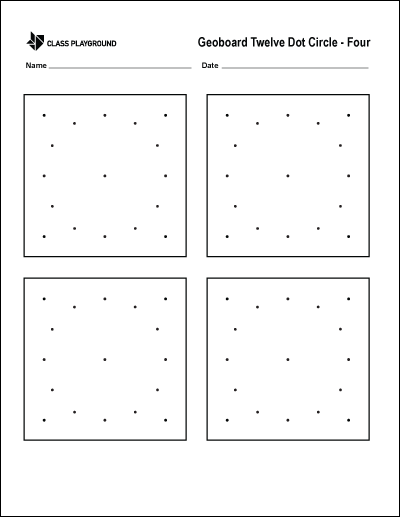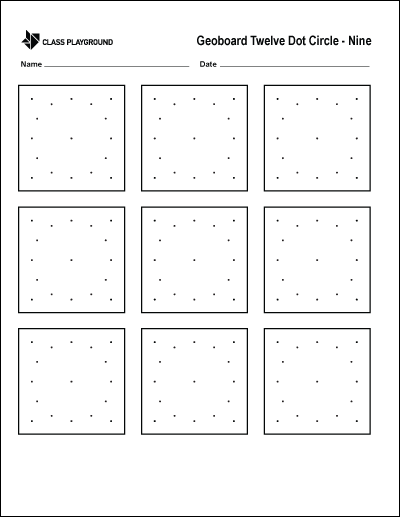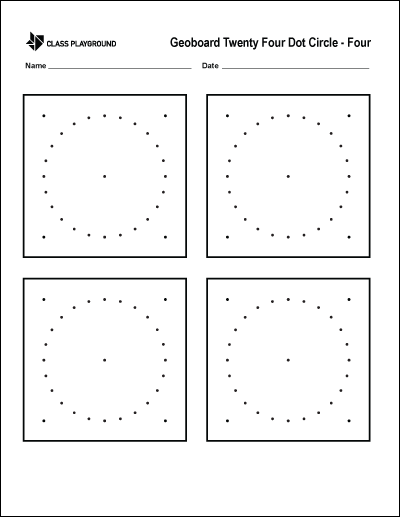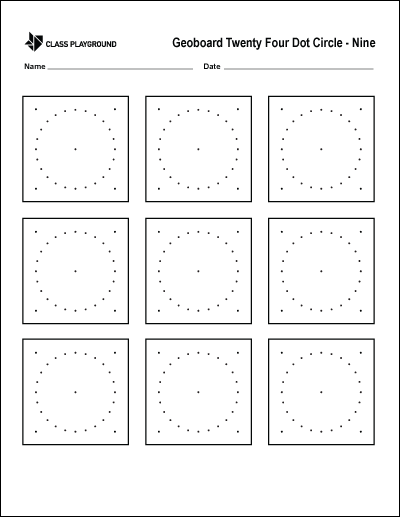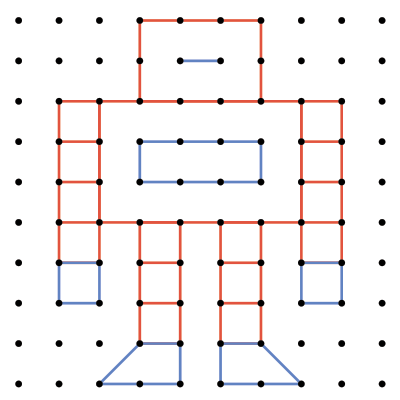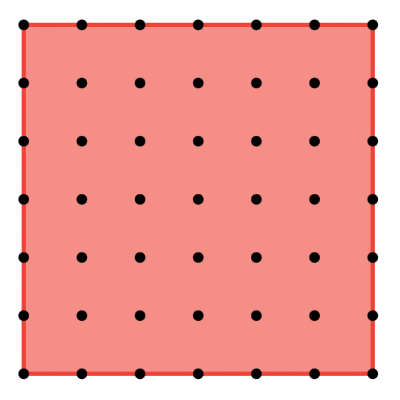Geoboard: A Versatile Learning Tool
How many shapes with four sides can you make? How about shapes with five sides? One way to explore shapes is with a geoboard. This math manipulative offers an interactive and engaging method for teaching a variety of math topics including geometry, perimeter, symmetry, and more.
What Is a Geoboard?
A geoboard is a mathematical manipulative used to explore basic concepts in plane geometry. It consists of a square board with pegs or nails set in rows and columns, around which rubber bands can be stretched to create various shapes.
How to Use a Geoboard in the Classroom
Using a geoboard is simple. Students can create shapes with several different rubber bands or stretch one band to outline a figure. Begin with open exploration, then move into targeted tasks connected to area, perimeter, polygons, symmetry, angles, and more. If you don’t have physical boards available, try the Toy Theater Geoboard for a free online version.
Geoboard Activities that Support Learning
Discover some engaging ways to use geoboards in the classroom.
- Working with Shapes
Create squares, rectangles, triangles, and other polygons by stretching bands around different pegs.
- Ask students to copy the shapes into a notebook and label them.
- Invite comparisons: number of sides, vertices, size, and orientation.
- Have students make shapes that share one property (e.g., 5 sides, 4 vertices), then describe similarities and differences.
- Exploring Area and Perimeter
Use the board to visualize area and perimeter. Count square units inside the shape for area; count or calculate along the edges for perimeter. Extend by solving for area and perimeter of rectangles and other polygons students build.
- Studying Angles
Build and classify right, acute, and obtuse angles. Have students construct polygons and analyze the angles formed.
- Exploring Symmetry
Symmetry pairs naturally with geoboards. Create figures with line symmetry, then investigate rotational symmetry. For example, compose a hexagon from congruent triangles and discuss turns and lines of symmetry.
- Investigating Fractions
Model parts of a whole by covering portions of the grid. Connect to fractions by showing halves, quarters, or eighths using triangles and rectangles on the peg array.
- Create Pictures
Challenge students to recreate images on the geoboard—animals, vehicles, letters, or food. Provide a template students can copy for extra support.
- Use with Graph Paper
Deepen understanding by transferring geoboard designs to graph paper. This supports spatial reasoning and opens opportunities to measure angles, draw lines of symmetry, or calculate area and perimeter.
Benefits of Using a Geoboard
Geoboards offer an engaging way for children to explore many math concepts. Key benefits include:
- Promotes Concrete, Hands-On Learning
Start with tactile exploration of polygons, angles, and symmetry before moving to abstract representations and definitions.
- Supports Fine Motor Skills
Stretching bands over pegs builds coordination and control, especially helpful for younger learners.
- Encourages Creativity
Open-ended tasks empower students to design patterns, pictures, and even letterforms—great for math-art connections.
- Differentiates Easily
Students can work at their own pace in centers or at home. The tool’s simplicity makes independent practice possible.
Conclusion
The geoboard turns abstract geometry into something students can see and touch. From polygons and symmetry to angles, area, and perimeter, this versatile tool builds understanding—and confidence—through hands-on exploration.
Geoboard: Designs





Geoboards are a valuable tool for teaching fundamental concepts of geometry. The book contains a collection of geoboard designs that help teachers explore concepts about symmetry, area, perimeter, and angles. Get your copy from Amazon today.

